Lots of people. Lots of different groups. Here are some.
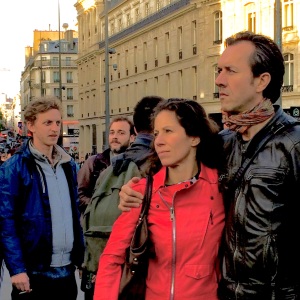

Here are some of their ideas and concerns.
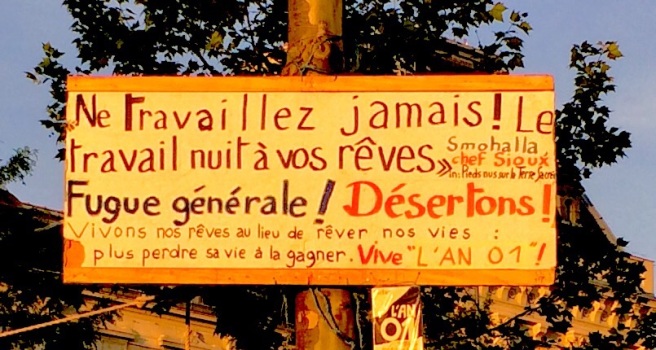

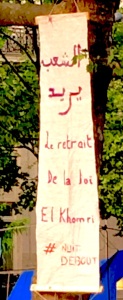


Lots of people. Lots of different groups. Here are some.


Here are some of their ideas and concerns.





There’s a background of violence in Paris right now. You see soldiers armed with submachine guns walking, in groups of four or five, in neighborhoods such as the Marais or Belleville, along Canal St. Martin (below), or just anywhere.

Look around any corner, as I did one night walking home from dinner with a friend, and you may see five or six police minivans with several police for each one–just waiting for something that may or may not happen.
A lot of the violence is about the new labor law, the Loi de Travail which makes it easier to fire people, to give them less overtime and, in general, to grant them less job security. The French use the term “precarious.” The law makes people more precarious, less secure. So there are frequent labor union demonstrations, many of them ending in violence. That same night, after dinner but before our walk home, we saw a transportation minivan burned out by demonstrators. The French don’t mess around!
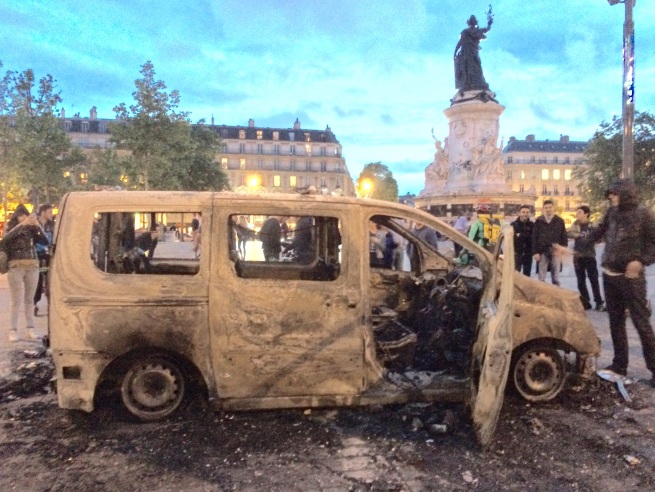
Another day, one a walk back to my apartment in the 19th after a trip to see the rising waters of the Seine, I ran into last evidence of a confrontation between police and demonstrators:
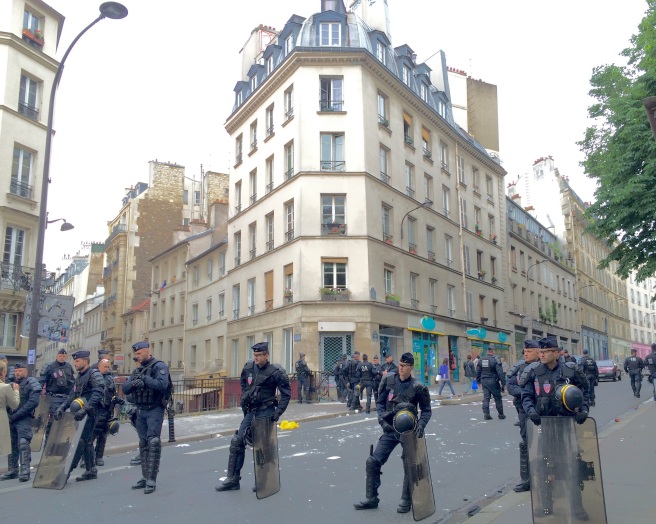

A large component of Nuit Debout activists are anti police violence activists. The issue is the same as in the US, police targeting of marginalized groups, in France, mostly North and Subsaharan Africans. Here are some activists:
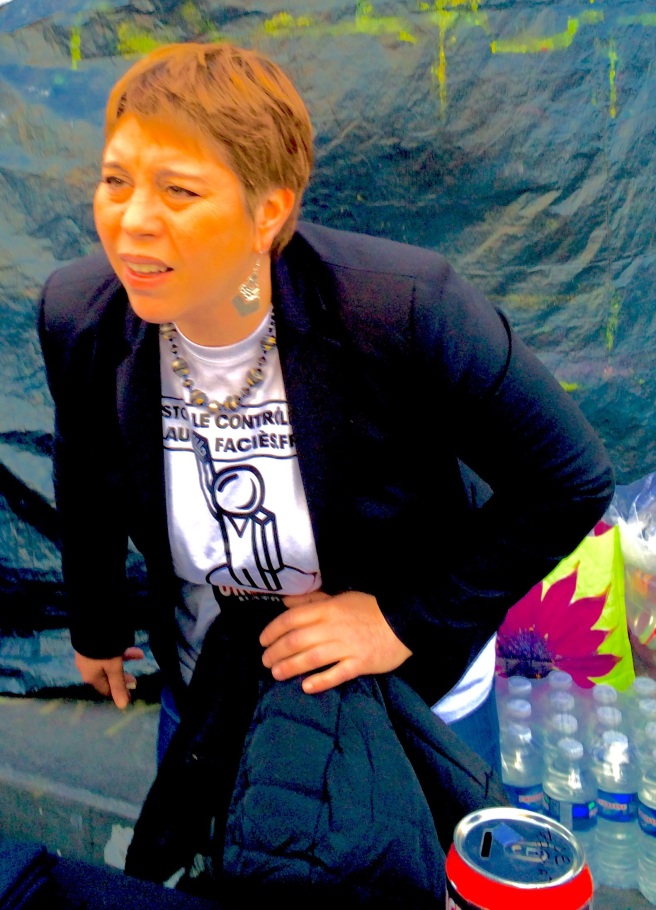
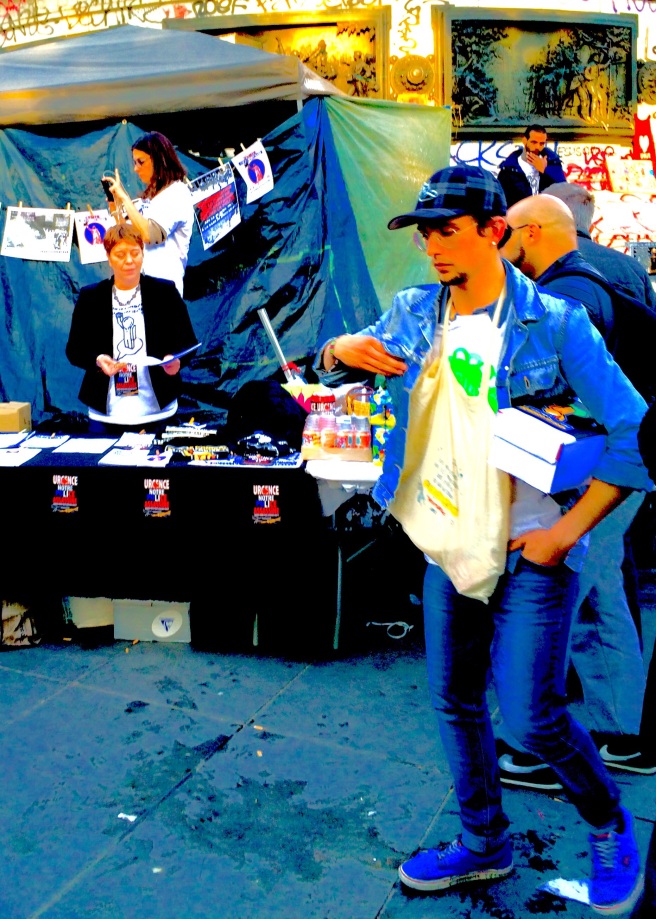
Police organized an anti anti-police violence demonstration one day recently. Of course, where did they decide to have it? In Place de la Republique, where Nuit Debout takes place every day, and where anti-police activists are numerous. Not surprisingly, a confrontation ensued, part of which I heard and saw (and blogged about previously):



There’s a lot of discussion in the mainstream press about violent incidents committed by young Muslims in France, as there should be. But there’s not much discussion about the labor-related violence. Why? Who wants the picture we get to be oversimplified? Who wants us simply to think violence in France is about mistaken belief and not about ways people are reacting to a changing political and economic world?
Discussion circles are central to Nuit Debout. Groups form to discuss ideas about the democracy to come. What will it be like? Will it be feminist? Will it involve work or find a replacement for work as we know it? Do we need a general strike to get there? What about the schools? What good are they when unemployment is 25% (30% in the suburbs)? Groups form, sit on the ground, and have at it. Here’s one, about general strike (note the homeless person sleeping under the tent):

There’s no discussion without food, of course, so there are food tents:

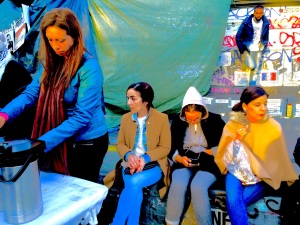
And discussion everywhere!

Media, hand-made and technological, too.
There’s a hunger for ideas, a hunger for a new world.
There are kids at Nuit Debout, too. Here are some of them:


Student response to the proposed neoliberal labor law has been strong but it has not been covered widely by mainstream press. Unemployment among the young in France has been around 25% for some time–and it’s around 30% in the banlieus (suburbs) where low income people live, many of them North or Sub-Saharan African. It’s not surprising, as a result, that kids don’t support a law that makes businesses more flexible by making working people more precarious.
There have been sit-ins and demonstrations at a number of schools against the labor law, the Loi de Travail. After one that took place in the 19th arrondissement, the video of a child demonstrator being beaten by police made the rounds on social media for a time. In the video, policemen in full riot gear tell the child repeatedly to get up and, when he does, beat him: beating. The school, Lycée Henri Bergson, is close to the apartment I stayed in–right on the way to the beautiful Buttes Chaumont Park!
The next day, in response, students attacked two police stations in the vicinity, one in the 10th and one in the 19th: police station attack in the 19th.
At Nuit Debout, I learned from a lycée (high school) student that these were not isolated incidents. There have been numerous school walkouts, demonstrations and blockages. Here’s one, Lycée Colbert, he told me was occupied. The banner advertises a meeting about it:

It’s not just students protesting, though, but teachers, too. On a casual walk in the 10th, I saw a sign against class closures hanging from a well-kept school.

Ninety-one class closures are planned for Paris schools in Fall 2016–and France has the world’s fifth or sixth strongest economy!
No wonder we’re seeing violence in the streets.
My first expedition during my stay in Paris was to see Nuit Debout, a French political movement similar in many respects to Occupy in the U.S. It’s located at Place de la République.

The movement is called Nuit Debout (Night on Your Feet) because occupying and, generally, demonstrating are not currently allowed in France due to the state of emergency declared after the November 2015 attacks. So, though there’s a large crowd at Nuit Debout every day–especially large at night and on weekends–the people there don’t, technically, occupy.
I’ve wondered if the name might also be in solidarity with Paris’s many homeless immigrants. They spend every night on their feet.
Walking around the place, there’s a lot to see–big crowds and a variety of different activities. At one end is the General Assembly, with speakers in the front advocating positions and a large crowd sitting on the ground listening and ultimately voting on the issues, waving fingers on each hand to signify a yes vote. All ages are represented not, as is commonly thought, only young people.
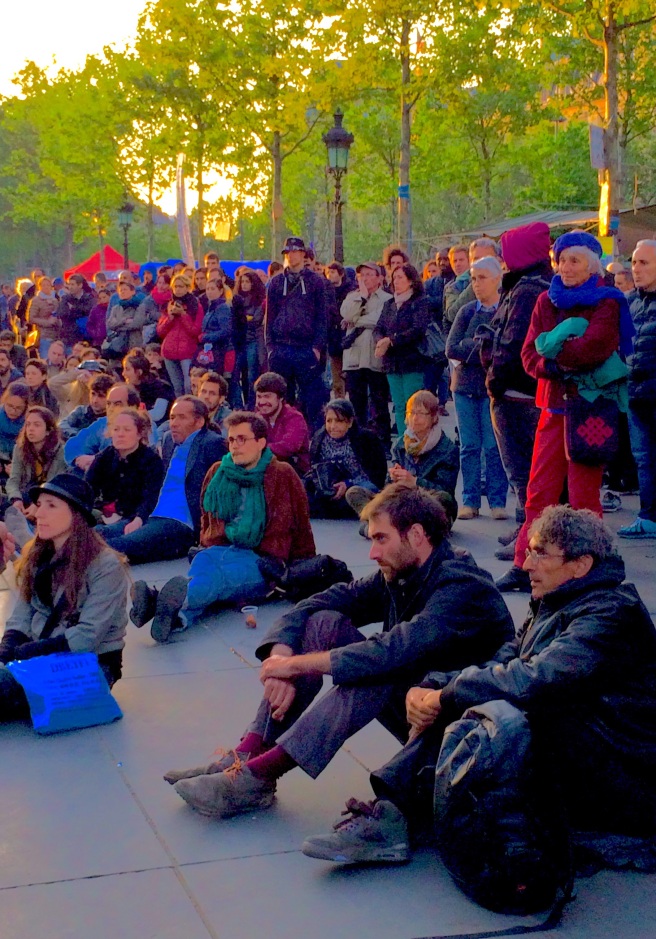

At another end, performers–mostly rap singers when I was there–take the stage and sing to a large, appreciative crowd. There are no chairs, so the packed crowd really is on their feet, or sitting on the ground. When I was there, the music crowd was predominantly North African and Sub-Saharan African, while the General Assembly crowd was predominantly white–but I think that may have been due to who was performing during that week.
At the center of Place de la République is the Mariane statue. Mariane is the French symbol of the Republic–not of the French soil or of the French ancestry, but of the French republic and what it stands for. She is surounded, in the monument, by three other statues symbolizing liberty, equality and fraternity. Is that what I was seeing there, a new uprising of equality and liberty resting on a foundation of fraternity manifest in open participation? Or is it something new, struggling to be born, in music and discussion that takes up and changes old forms?
Is what I saw, on all sides of the old Mariane statue, people coming together in the hope and dim vision of something new?
I saw lots of interesting things in Berlin, but I love these last bits of graffiti art from the Tacheles site, now closed. I edited a little, to bring the beauty to sight.
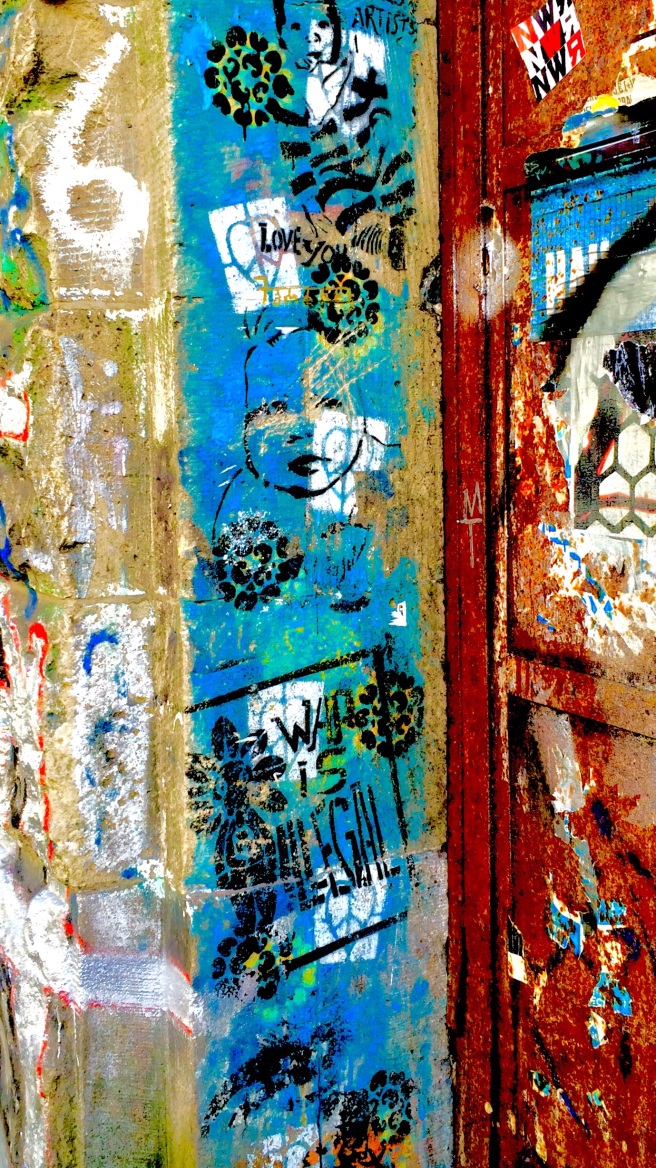
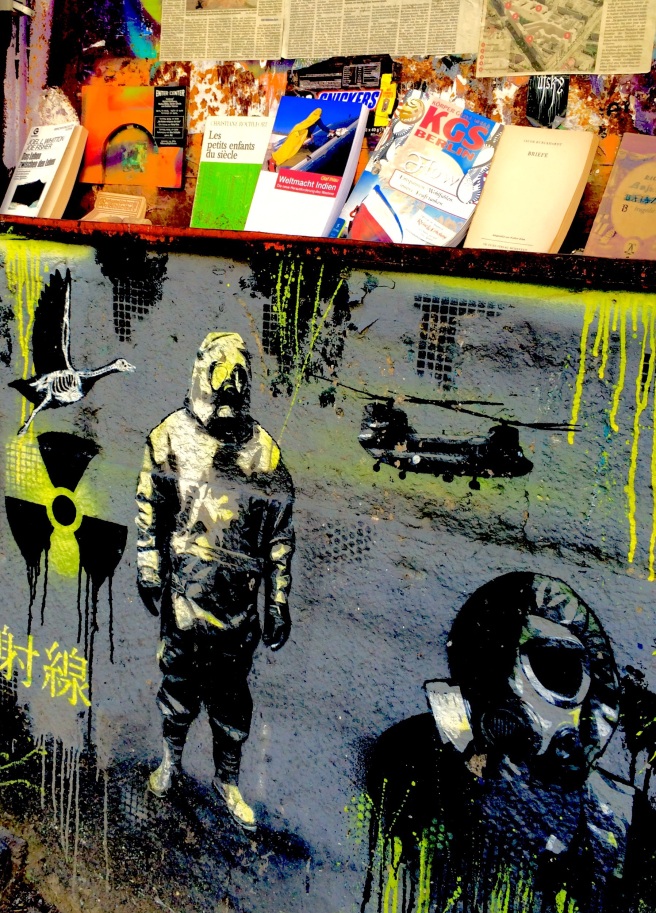
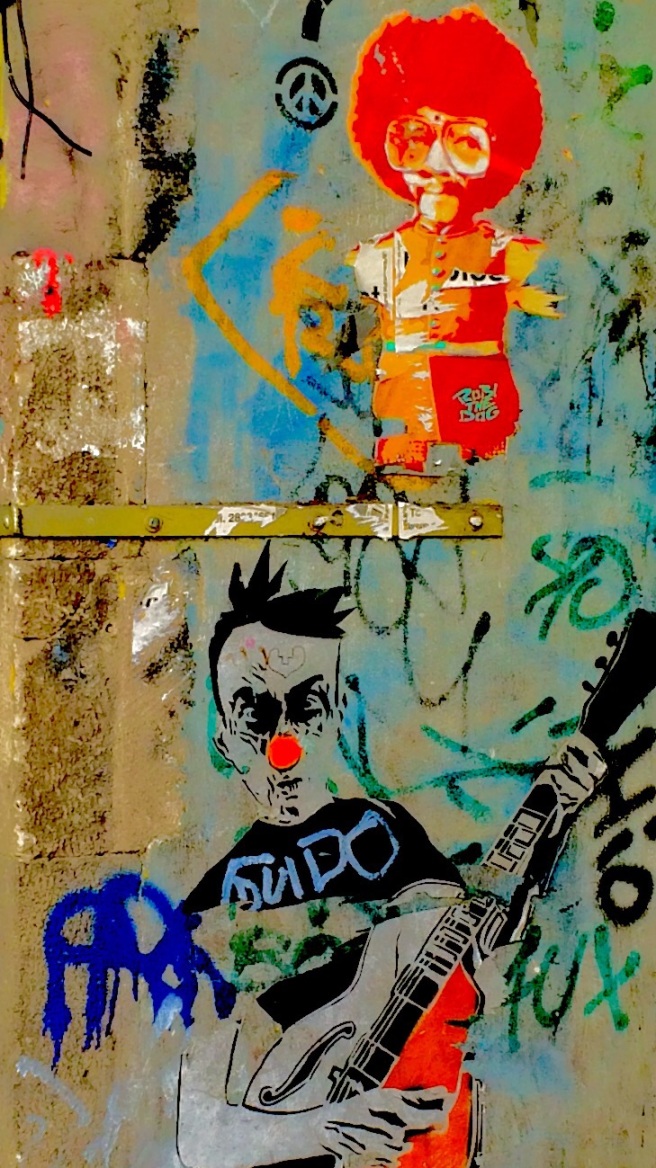






I heard shouting and went out my door in the 10th arrondissement. Demonstrators were shouting and marching en masse into the neighborhood. Police were leaving Place de la Republique.

I learned later that police had been demonstrating against anti-police violence. Why they were allowed to go, en masse, into a square where anti-police demonstrators have been congregating every night, I do not know. In my experience, for the last few nights, there is a large contingent there every night that are explicitly anti-police or anti police violence.
Soon, I saw a police car on fire.
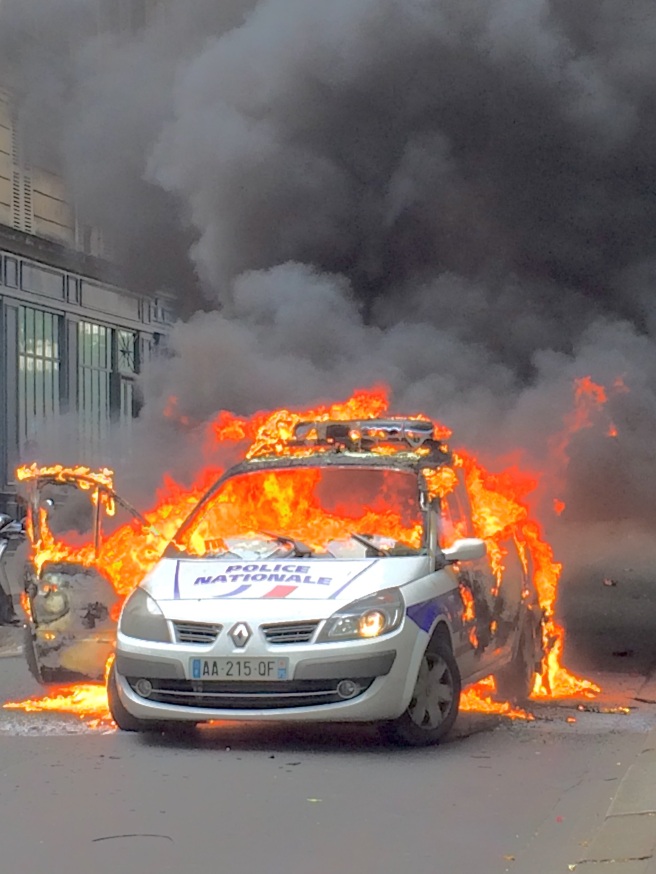

Some demonstrators, I learned later, sent a Molotov cocktail, or something similar, into the car, forcing two police out of it.
There were a lot of spectators. The car was burned near Canal St. Martin, a busy shopping and eating area.


I was surrounded by police at a certain point.
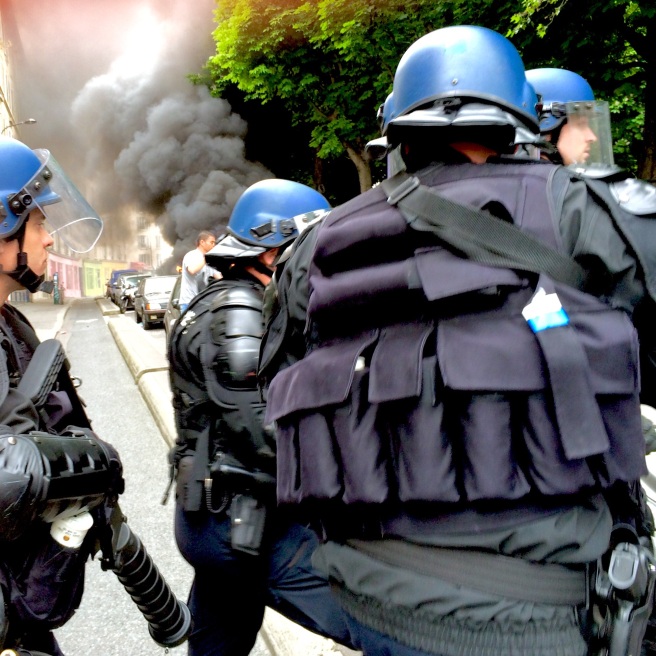
Some demonstrators were still around, but not too many.
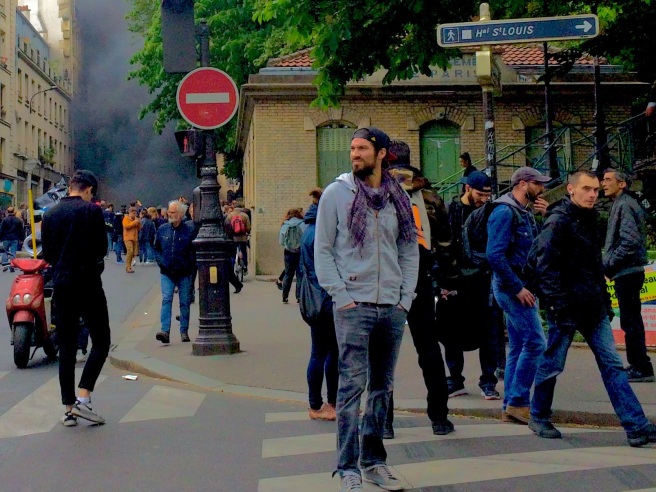
I left the scene and saw police marching away.

Every night, there are hundreds of demonstrators at Place de la Republique, many of them all night I think–some angry and shouting to hip-hop in big crowds, others idealistic in discussion circles quietly planning the next republic.
Who in their right mind would have thought there could be a peaceful police demonstration there?
Click on this link to see “Change and History,” my third contribution to Our Town Reno, a local justice and housing site.
Click on this link to see “Change and Access,” my second contribution to Reno’s social justice and homelessness website, Our Town Reno.